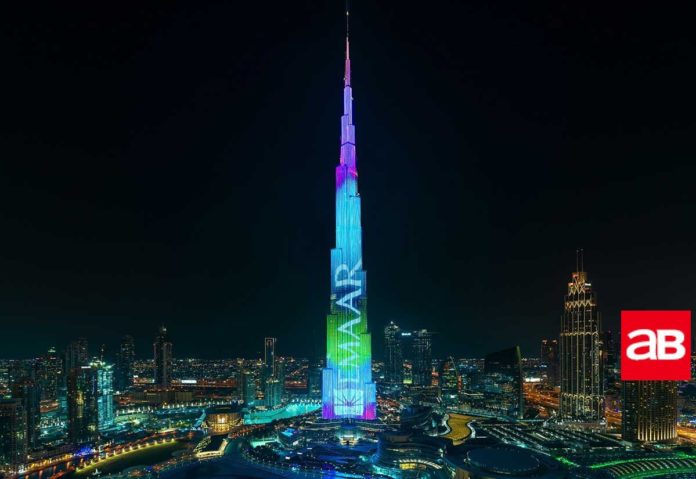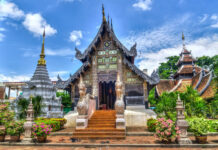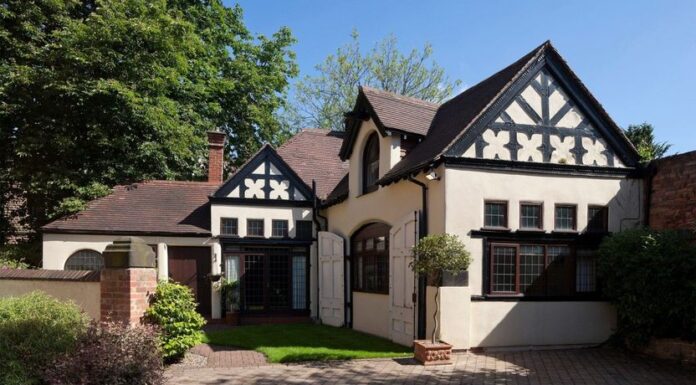Architecture is the art of creating, designing, and building structures out of the intermixing of physical materials and our own thoughts, ideas, and beliefs. Presently, architecture has morphed itself as a science studied across the world. In the past, we made shacks and huts for the basic needs of shelter and protection. We made buildings for utility and for the sake of using them but little by little, the added qualities of aesthetics and comfort were also absorbed in the field of architecture. Today, it fulfills many requirements.
The architecture of a place fundamentally reflects the culture and past of the place and reasons out how things might have been because it is not only a form of art but also serves and satisfy human needs. Thus, it gives a good picture of the earlier setting and of the culture broadly.
The exact origin of the architecture dates back to the 10000 BCE to 8000 BCE during the new stone age better known as the Neolithic period when people shifted to agriculture, domesticated animals, and started constructing houses.
It cherishes the core qualities of humans that are integrity, invention, innovation, and ideas upon which it relies.
Today, on the land of the United Arab Emirates, stands the unrivaled epitome of fine modern architecture. Now acclaimed and acknowledged as the world’s tallest manmade building. The Burj Khalifa. The marvelous skyscraper broke all the records when it surpassed the height of another cloud-piercing tower, Taipei 101, and was crowned the title of the tallest artificial structure ever made.
Dubai, one of the richest cities in the world, is the most befitting place for luxuries, shopping, tourism, and leading a life brimmed with liveliness but it is also notable and recognized for its extravagantly ultramodern architecture display. Burj Dubai renamed Burj Khalifa in 2010 is the tallest skyscraper with an astonishing sky-kissing height of 829.8 meters (2722 ft.).
Burj Khalifa is a neo-futuristic architectural styled building, symbolizing the nouveau high-tech architecture of the 21st century. It is centered in Downtown Dubai, the biggest hub for business and tourism, in the emirate of Dubai. It was chiefly designed by the US-based architect, Mr. Adrian Smith from the Skidmore, Owings & Merril firm. The building was formally opened on the 4th of January 2010. It was a part of the new large development, Downtown Dubai to add to its stature. But more significantly, the prime reason for the construction of Burj Khalifa was to elevate the identity of Dubai from a city pivoted around oil production and business to a location gaining international attraction and recognition every day. Since its inception in 2010, Burj Khalifa is one of the most visited tourist spot in the world, attracting millions of tourists across the world every year. It is now a true global tourist destination with over 15 million people arriving here to behold the amazing model of unparalleled architecture. The figures are certainly expected to rise in the future.
Construction & Design: A tall order
The initial excavation for laying a deep foundation started in January 2004. According to the official sources, 45000 cubic meters of concrete and steel were used to build up the foundation with approximately 192 piles buried 164 feet deep to support the total weight of the mighty structure. A special blend of concrete was manufactured to resist and sustain the extreme pressure of such a gigantic building’s weight. Bill Baker was appointed as the chief structural engineer. The Buttressed Central Core structural system was employed to reinforce the height of the building.
Samsung C&T of South Korea was primarily assigned the construction of the Burj Khalifa. It was logged that 12000 workers and laborers worked every day. The skyscraper was formerly known as Burj Dubai or Dubai Tower but was renamed for paying reverence to the ruler of Abu Dhabi, Khalifa bin Zayed Al Nahyan and the government of UAE.
The interesting feature of the structural design is that it is inspired by a popular desert flower, hymenocallis, or (spider lily). It’s a Y-shaped tripartite base structure with the wings of the building stretching out from its central core. Adrian Smith, the chief architect has included various patterns and designs and drew significant inspiration from the Islamic architecture which is noticeable from the look of the tower. The stepped spiral design of the skyscraper recollects the traditional Middle Eastern architecture. The tower was built not only to gain fame but to house multifarious commercial, residential, and hospitality projects and ventures, luxury accommodations, and lodgings exclusively designed by Italian Fashion freak, Giorgio Armani along with work-central and office workplaces, observation decks, restaurants, and shopping stores. The unique design of the building- with 27 setbacks swirled around it assists in culling the impact of wind. The design of the building was also tested numerous times with the help of wind tunnels. As the central core of the structure ascends the top, it is carved out to form the finishing spire. Burj Khalifa’s spire is an astounding 244 meters long, made up of more than 4000 tonnes of structural steel. It also accommodates the communication equipment and system. Scaling the heights, the pinnacle pipe mounted on top weighs 350 tonnes with a total height of 200m, approximately 660 feet. The Burj Khalifa is surprisingly thrice as tall as the Eiffel tower and two times as tall as the Empire State Building.
Burj Khalifa is a momentous achievement of Engineering and truly certifies the fact that humans are capable of building extraordinary structures when everybody will join hands and commit to a single goal.
The Economics and Challenges: Hard as nails
The creation of such a bewildering skyscraper was definitely a daunting task, both economically, geographically, and architecturally. The building was finished in 2010, even after the financial breakdown of the economy and global financial crisis of 2008-09. Dubai faced a massive debt bump because of the financial crisis. Many large-scale developments and projects in progress came to a halt during the grim period. But the ruler of Abu Dhabi, Khalifa bin Zayed Al Nahyan, Abu Dhabi, and the federal government of UAE assisted Dubai and granted close to 80 billion dollars to help them pay its debts for construction activities to diversify the metropolis. As a tribute to the ruler, the skyscraper was officially renamed The Burj ‘Khalifa’. It cost nearly 1.5 billion dollars to construct the monumental building of such a scale. However, at the time of its inauguration, the interiors of the building weren’t entirely finished. Despite the architectural challenges, a major static obstacle was the climate of Dubai and the Middle East. Hot as hell. The heated climate of Dubai posed really a great test in the execution of the construction plan. The building had to bear the intense heat, with temperatures rising to above 50° Celsius in summers. To fix this issue, a state-of-the-art exterior wall cladding system was put in place. Scores of specialized people in China were brought in here to set up 24300 cladding panels to withstand the extreme heat. Interestingly, the temperature at the top is 15 degrees than that at the bottom floor. It also encompasses the condensation-collection system in order to store the condensed water in the holding tanks below the structure. We can infer that it must have been horrifyingly grueling and hard to manage such an arduous job in the given circumstances. But this clearly depicts the sincerity, dedication, and integrity of the workmen and architects to execute the architectural plan no matter what it stipulates.
Record Maker or Record Breaker?
By its completion, the marvelous skyscraper already set quite a few world records and broke some of them too. Burj Khalifa has heralded the eminent title of being the world’s tallest artificial structure ever made and was marked the most exemplifying and distinct piece of ultramodern architecture and high order engineering. Let us take a look at all of the amazing records set by the tower till today:
- Tallest existing structure: 829.8 m (2,722 ft)
- Tallest structure ever built: 829.8 m (2,722 ft)
- Tallest freestanding structure: 829.8 m (2,722 ft)
- Tallest skyscraper (to top of spire): 828 m (2,717 ft)
- Tallest skyscraper to top of antenna: 829.8 m (2,722 ft)
- Building with most floors: 163
- World’s highest elevator installation(situated inside a rod at the very top of the building)
- World’s longest travel distance elevators: 504 m (1,654 ft)
- Highest vertical concrete pumping (for a building): 606 m (1,988 ft)
- World’s tallest structure that includes residential space
- World’s highest installation of an aluminum and glass façade: 512 m (1,680 ft)[25]
- World’s highest nightclub: 144th floor[26]
- World’s highest restaurant (At.mosphere): 122nd floor at 442 m (1,450 ft)
- World’s highest New Year display of fireworks.
- World’s largest light and sound show staged on a single building.
Architecture is great.
From the prehistoric style to the Egyptian-Babylonian style of architecture; Evolving from the early 1700s’ Baroque style to the modern architecture since the 1920s. Architecture’s progression and evolution had always been parallel to that of humans. Every dash of it is beneficial to society. It mirrored every change transpiring in human civilization as of now. And with the perpetual advancements in technology and innovation, it’s completely reasonable to expect that more heaven-reaching structures and buildings will be constructed in the future because Burj Khalifa is just a beginning. There will be many more.
By Topesh Kumar Dhruw











